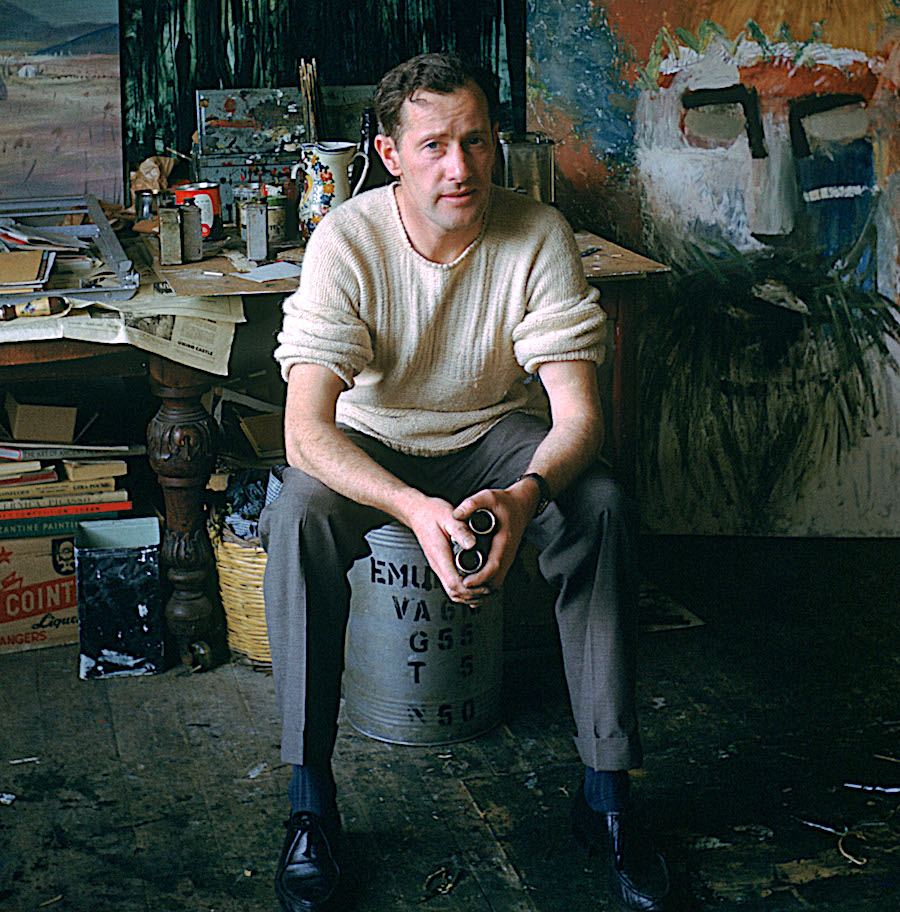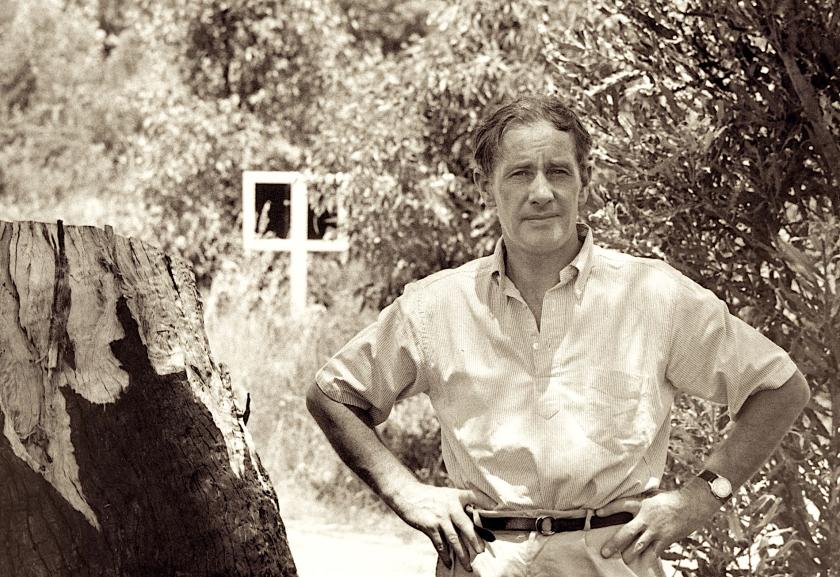Reckless, unstoppable, one step ahead of everyone else, a hell of a lot of fun, utterly charming, street smart – descriptions of the artist Sidney Nolan (1917-1992) poured out from colleagues, rivals, curators, art historians and dealers, not to mention friends and family, in this persuasive film. One remarked with rueful admiration that the painter’s acute survival instincts involved a little bit of clawing here and there. Even his appreciative grandchildren saw him as a vital force, with a sly Irish sense of humour.
All agreed you could not compare this working-class original with anybody else. But first we heard Nolan himself eulogising gum trees, the river and the Australian sunlight, and from time to time the programme opened up to the landscapes of Oz which so moved the artist, from lush greenery to the surreal moonscapes of drought punctuated by the desiccated carcasses of sun-baked animal, victims of the extreme climate. At 14 Nolan left school and his enormous energy was turned to the arts. He was, we were told, an Artist with a capital A and painting took over his life. He eloped with Elizabeth, a young art student, and had a daughter, Alameda. All his life he insisted on his working-class roots, and had an intense love-hate relationship with the Establishment from Oz. He was based in England for his last 40 years.
At 14 Nolan left school and his enormous energy was turned to the arts. He was, we were told, an Artist with a capital A and painting took over his life. He eloped with Elizabeth, a young art student, and had a daughter, Alameda. All his life he insisted on his working-class roots, and had an intense love-hate relationship with the Establishment from Oz. He was based in England for his last 40 years.
A big exhibition of modern art was brought to Melbourne in the 1930s by Keith Murdoch (the father of you-know-who) and his Herald newspaper, and at 21, Nolan was swept away; with no money to back him up, he metaphorically jumped off the cliff. Early Nolan created energetic derivative abstracts, resonant with colour, and caused a scandal: a viable plausible push for modernism in Australia, zero acceptance in Melbourne. John and Sunday Reed, defying prevailing opinion, became patrons andd offered financial support. Nolan joined the Reeds. Sidney fell for Sunday who was his aide de camp for the Ned Kelly paintings which he painted at the Reeds’ dining room table and were to make his name (Nolan does Ned Kelly, pictured above).
The imaginative scenes set in the iconic Australian landscape of the outlaw remain a huge achievement, with one fetching the highest price yet for a 20th century Australian painting – over $5m. Complications ensued with a menage à trois; then Sunday would not leave John to be with Sidney and Sidney left his own tiny family, reconnecting with his daughter years later when he and a television crew visited. You couldn’t make it up. The tiny avant-garde artistic community included Arthur Boyd, Albert Tucker and John Perceval.
Nolan’s passion for landscape was portrayed with compelling vistas of Australia’s extraordinary and idiosyncratic nature. We witnessed the pink sheen of central Australia and the aerial views that so affected Nolan, and the surreal moonscape aridity of drought-affected Queensland. The next twist and turn was the unexpected patronage of Kenneth Clark, the Lord of Civilisation himself who persuaded the young artist to come to London. Nolan married his second wife, Cynthia, John Reed’s sister. A depressive, she later committed suicide. Nolan’s third wife was Mary, Arthur Boyd’s sister. Living in London, Nolan became the first Australian artist to have a reputation outside his homeland.
 He worked and networked incessantly, vintage film showing him with the great and the good, royals and all, at grand gallery openings, the decorum already charmingly dated. And he travelled incessantly – Antarctica, the Silk Road, China, Africa, all scenes for his omnivorous practice, putting human narrative into a global landscape. Nolan had a sharply focussed visual memory, referring often to his quick flicks as he explored the imagery stored in his brain. He loved new possibilities, was addicted to taking Polaroids and finally to the possibilities of the Paintbox computer programme.
He worked and networked incessantly, vintage film showing him with the great and the good, royals and all, at grand gallery openings, the decorum already charmingly dated. And he travelled incessantly – Antarctica, the Silk Road, China, Africa, all scenes for his omnivorous practice, putting human narrative into a global landscape. Nolan had a sharply focussed visual memory, referring often to his quick flicks as he explored the imagery stored in his brain. He loved new possibilities, was addicted to taking Polaroids and finally to the possibilities of the Paintbox computer programme.
He used house paint, industrial paint, spray paint, his hands and fingers as well as brushes, ever innovative. Complacency he considered the enemy: artists, he declared, were people who could think rather than people who could paint. Throughout, he had also designed for stage and theatre. London’s Royal Opera thought him a genius, and his set and costume designs for Saint-Saens’ Samson and Delilah (1981) were an innovative landmark.
This documentary was a surprisingly unpretentious and convincing portrait of an artist, persuasively showing in what particular ways Nolan evolved his own idiosyncratic and memorable language. He was motivated by his relentless curiosity and relentless imagination, no maverick he but a true original. However inexplicable the nature of inspiration, it was an informative pleasure to observe Sidney Nolan through the landscapes he saw, the observations of professionals and family, and a complex web of personal relationships. And there was the curiously elegant figure of the man himself as he wove his illuminating way through the various worlds he inhabited.















Add comment